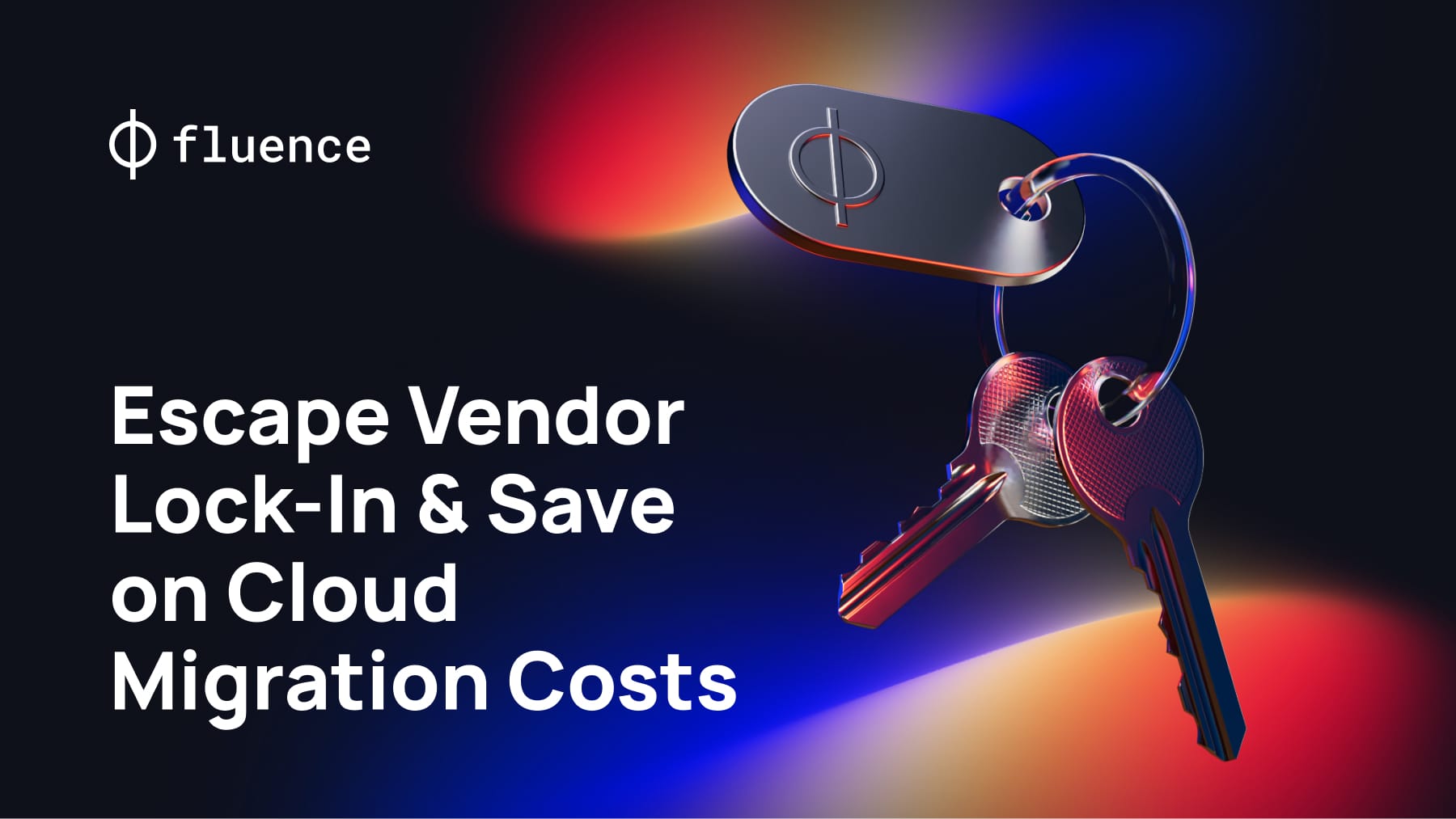6 Proven Methods to Save on Cloud Migration Costs (and Escape Vendor Lock-In's Grip)
Discover how to reduce cloud migration costs by up to 66% with smart planning, vendor-neutral architecture, FinOps practices, and emerging alternatives like decentralized infrastructure. Learn key strategies for lasting savings and flexibility.

Cloud migration offers measurable financial and operational gains—up to a 66% reduction in compute, storage, and networking costs when moving from on-premises infrastructure to the cloud.
Still, those benefits don’t simply happen. Poor planning, vendor lock-in, and misaligned architectures often undermine expected returns. Many organizations end up tied to proprietary ecosystems with escalating costs and limited flexibility.
This article outlines a technical, step-by-step plan to help reduce cloud migration costs while maintaining long-term flexibility. Each step delivers both short-term cost control and strategic options for the future.
Method 1: Strategic Pre-Migration Assessment and Financial Planning
Cost control starts before a single workload moves. A thorough pre-migration assessment is essential.
Begin with a workload analysis. Identify dependencies, latency sensitivities, licensing needs, and performance demands. Not every system fits neatly into the cloud. Legacy architectures, highly coupled databases, or ultra-low-latency applications may need rework or hybrid solutions.
Follow with a Total Cost of Ownership (TCO) review. Factor in far more than just compute and storage:
- Networking fees, especially between regions and for outbound traffic
- Software licensing (e.g., Windows Server, Oracle)
- Labor expenses tied to security, compliance, engineering, and support
- Third-party migration tools and consultants
Use tools like the AWS Pricing Calculator to explore configuration options and generate accurate forecasts. This avoids the costly trap of underestimating expenses.
Define relevant KPIs that map to business outcomes. These may include reduced capital expenditure, faster deployments, or improved service uptime. Clear KPIs ensure that infrastructure efforts stay aligned with executive objectives.
Method 2: Build for Portability and Interoperability
Vendor dependency often begins with early architectural decisions. While proprietary platforms (e.g., AWS Lambda, Azure Cosmos DB) can increase developer speed, they can also restrict future choices.
Design with flexibility in mind:
- Choose open APIs and standard data formats such as JSON, Parquet, or CSV to minimize data conversion costs.
- Package applications in containers using Docker and orchestrate with Kubernetes to make workloads easier to move across clouds.
- Use infrastructure-as-code (IaC) systems like Terraform to standardize deployments across providers.
- Add abstraction layers like service meshes (e.g., Istio) or API gateways (e.g., Kong) to separate application behavior from infrastructure specifics.
A future-proof architecture supports provider choice and simplifies exit strategies.
Method 3: Take Control of Your Data to Avoid Egress Charges and Dependency Traps
Data transfer costs are frequently overlooked. Shifting even moderate volumes between clouds or back on-premises can result in steep fees.
To reduce these expenses:
- Keep compute and storage in the same region to lower internal data movement costs.
- Use CDNs to serve content closer to users, minimizing outbound traffic.
- Review fee structures. AWS, for example, charges $0.09/GB beyond the first GB each month for outbound data. With high volumes, that adds up fast.
- Store data in open formats, such as Apache Avro or ORC, to maintain portability.
- Move cold or rarely used data to archival tiers. CyberCommand reports up to 50% savings with tiered storage.
Portability depends on retaining control over your datasets. Avoiding provider-specific formats and APIs makes it easier to relocate or replicate resources without costly rework.
Method 4: Negotiate Terms and Manage Providers Actively
Cloud contracts are often more flexible than they appear. Too many businesses sign boilerplate agreements without reviewing or negotiating terms.
Before any agreement:
- Examine SLAs, support levels, and termination conditions. Know upfront what it takes to extract data or cancel a service.
- Request reserved pricing, bulk discounts, or data transfer fee limits.
- Seek custom arrangements for large or long-term engagements.
- Create an exit plan per provider that includes timelines, export mechanisms, and backups.
Monitor renewal terms closely. Some vendors include auto-renew clauses that require written cancellation notice. A contract calendar helps avoid accidental renewals, a step recommended by CAST AI.
Well-managed vendor relationships shift cloud providers into collaborators rather than constraints.
Method 5: Establish FinOps and Ongoing Cost Management
Cost control requires constant attention. FinOps brings collaboration between finance, operations, and engineering into ongoing decisions.
Create a team that does the following:
- Track usage with both native tools (e.g., AWS Cost Explorer, Azure Cost Management) and third-party solutions (e.g., CloudHealth, nOps).
- Adjust instance sizes based on live utilization data. Oversized resources waste funds; undersized ones cause outages.
- Use pricing models wisely:
- Apply Reserved Instances or Savings Plans to steady workloads.
- Run Spot Instances when possible for fault-tolerant processes.
- Consider serverless tools like Lambda or Fargate for burstable tasks.
- Place workloads in more cost-effective regions. For example, according to nOps, environments in Ohio (us-east-2) or Ireland (eu-west-1) can cost 20–40% less for many use cases.
Cortex reports that a mature FinOps practice can cut costs by as much as 30%, through smarter resource choices and automation.
Method 6: Look Ahead and Explore Modern Cloud Alternatives
Cloud options now extend beyond traditional infrastructures. Multi-cloud, hybrid, and decentralized models offer more than redundancy. They provide cost and control advantages.
Strategic Multi-Cloud and Hybrid Cloud Adoption
Adopting multi-cloud or hybrid cloud strategies should be purposeful rather than reactive. Evaluate workloads that specifically benefit from multi-cloud environments, such as disaster recovery scenarios or leveraging best-of-breed services, to genuinely optimize cost and reduce risk.
Ensure you have robust management tools and clear processes in place to navigate the inherent complexity of multi-cloud setups without adding unnecessary operational overhead.
Investigate Decentralized and Cloudless Infrastructure
Stay ahead by exploring emerging models such as decentralized and cloudless infrastructure. These innovative paradigms challenge conventional hyperscaler models, offering new avenues to significantly lower costs and avoid vendor lock-in.
Fluence Network, for instance, provides a decentralized computing environment with Fluence Virtual Servers, delivering enterprise-grade performance at potentially up to 75% lower costs than traditional cloud providers.
Platforms like Fluence inherently eliminate vendor lock-in, ensuring greater portability, strategic flexibility, and reduced long-term expenses. Evaluating these solutions for specific compute-intensive workloads can drastically improve financial efficiency and maintain critical architectural agility.
Foster a Culture of Continuous Learning and Adaptability
The cloud landscape changes rapidly, demanding ongoing vigilance and adaptability from engineering and operations teams. Cultivate a culture of continuous learning to keep abreast of technological advancements, evolving pricing models, and emerging cost optimization strategies.
Regularly revisit and refine your cloud strategy, aligning it with evolving business objectives and industry innovations to secure lasting financial and operational benefits.
The future belongs to teams that stay informed. New tools, pricing models, and regulations appear regularly. Whether it's regulatory, technical, or financial, regular research and scenario planning help prepare for change.
Conclusion
According to CyberCommand, over 80% of companies that migrate to the cloud report measurable cost savings. Still, success depends on strategic preparation, flexible architectures, and active cost oversight.
Lock-in limits more than technical freedom. It reduces financial agility and increases hidden costs over time. Teams that architect with portability in mind, manage their data with intention, and keep close watch on cloud expenditures reduce unnecessary spending and increase adaptability.
To save yourself from excess cloud migration costs from day one, explore Fluence Virtual Servers.

